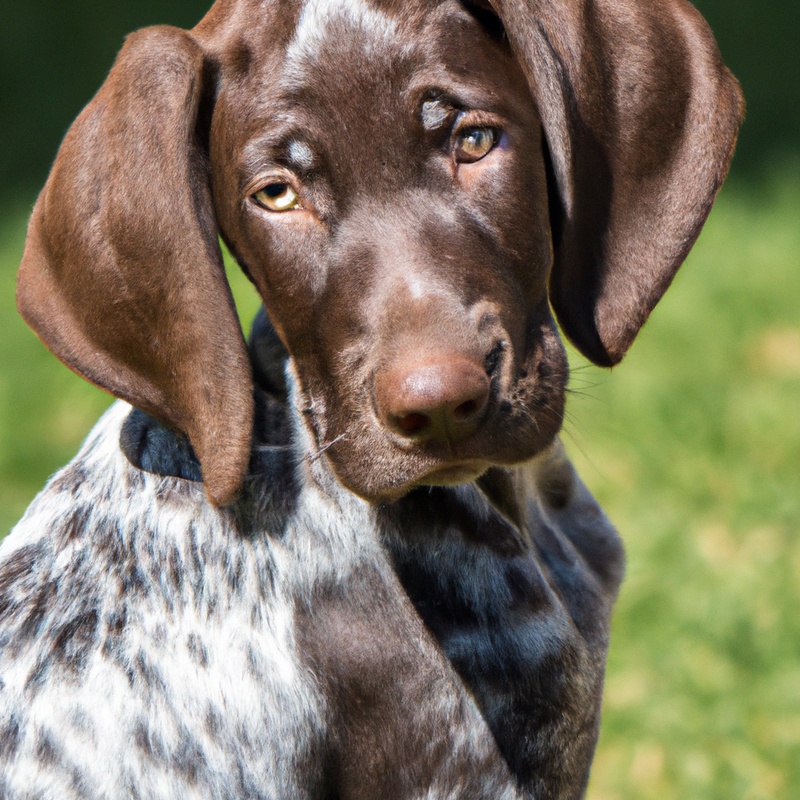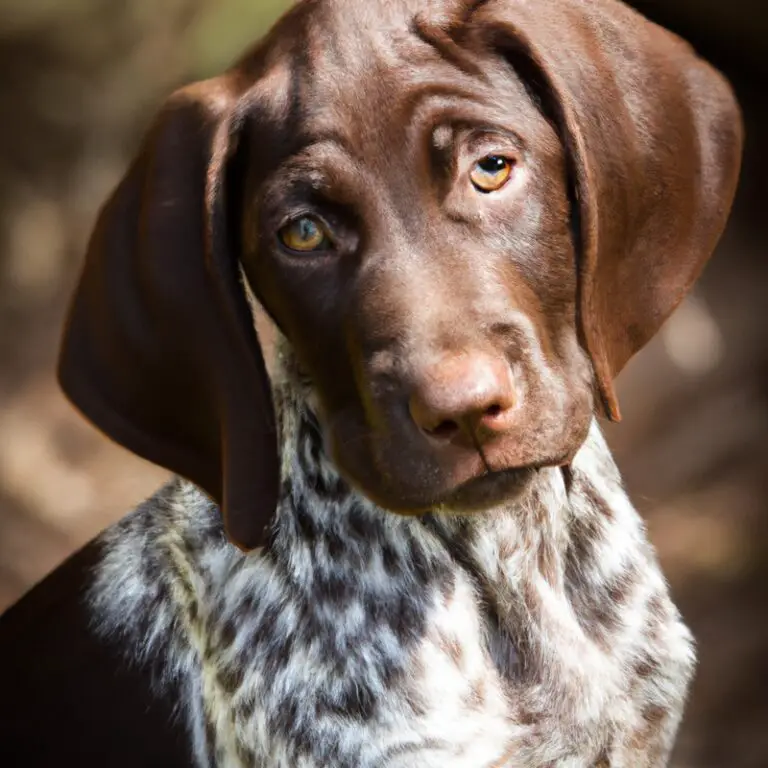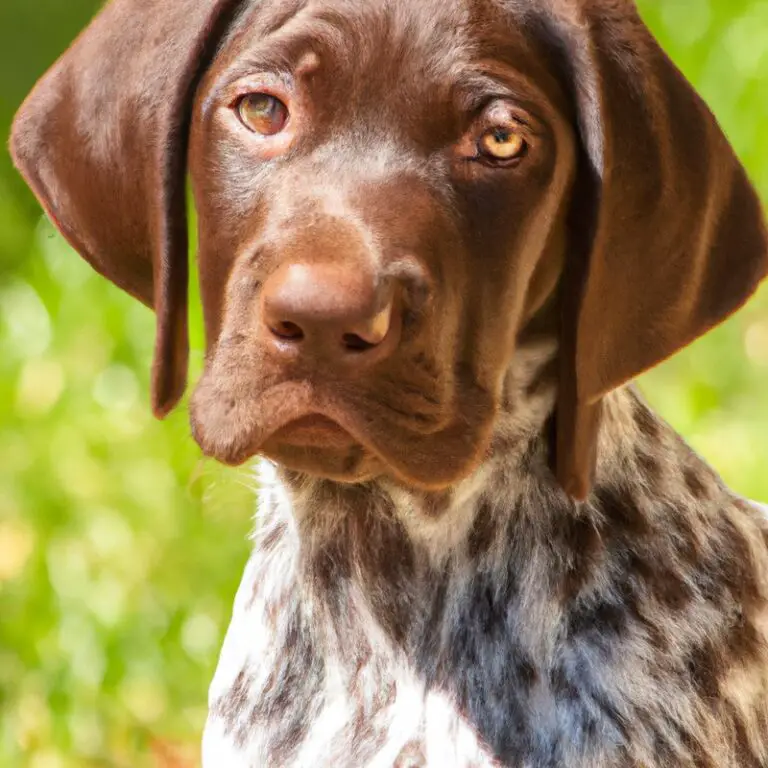How Do I Introduce My German Shorthaired Pointer To New Livestock On a Farm?
Key Takeaways:
- Establish trust and positive associations through controlled introductions.
- Gradually expose the German Shorthaired Pointer to livestock in a controlled environment.
- Supervise interactions between the dog and livestock at all times.
- Use positive reinforcement to reward desired behavior during introductions.
Are you a proud owner of a German Shorthaired Pointer and looking to introduce them to your farm’s livestock? It’s an exciting yet delicate task that requires careful planning and understanding of both your dog’s temperament and the behavior of the animals they’ll be interacting with.
As an expert in dog training and livestock management, I’ve faced this challenge personally and have some valuable insights to share.
In this article, I’ll guide you through the process of introducing your German Shorthaired Pointer to new livestock on your farm, addressing key steps, potential challenges, and important precautions. Let’s ensure a harmonious and successful integration for all!
| Step | Description |
| 1 | Start by introducing your German Shorthaired Pointer to the livestock from a safe distance, such as through a fence or gate. |
| 2 | Allow your dog to observe the livestock and get comfortable with their presence. |
| 3 | Gradually decrease the distance between your dog and the livestock while closely monitoring their behavior. |
| 4 | Use positive reinforcement techniques, such as treats and praise, to reward your dog for remaining calm and respectful around the livestock. |
| 5 | If your dog shows signs of aggression or excessive prey drive, consult a professional dog trainer or behaviorist for assistance. |
Understanding the Temperament of German Shorthaired Pointers and Livestock
German Shorthaired Pointers are known for their high energy and hunting instincts. They are intelligent, strong-willed, and require plenty of mental and physical stimulation.
When it comes to introducing them to livestock on a farm, it is important to consider their temperament.
GSPs have a strong prey drive, which means they may see livestock as something to chase and potentially harm. Proper training and socialization are crucial to ensure they can coexist peacefully with livestock without posing a danger to them.

Preparing Your German Shorthaired Pointer for Encounters with Livestock
Preparing Your German Shorthaired Pointer for Encounters with Livestock
- Familiarize your dog with farm animals through controlled exposure and positive reinforcement.
- Start by introducing your dog to smaller, calm animals to build their confidence.
- Use a leash and a secure enclosure to prevent your dog from chasing or scaring the livestock.
- Teach your dog basic obedience commands like “leave it” and “stay” to have better control in livestock situations.
- Gradually increase the complexity of the encounters as your dog becomes more comfortable.
- Monitor your dog’s behavior closely and address any signs of aggression or prey drive promptly.
- Consider consulting a professional dog trainer for additional guidance.

Introducing Your German Shorthaired Pointer to Livestock
Introducing your German Shorthaired Pointer to livestock on a farm can be done with patience and careful supervision. Start by allowing your dog to observe the livestock from a distance and gradually decrease the distance over time.
Always use a leash for control and ensure that your dog is calm and obedient before getting closer.
Monitor their behavior closely and reward calm and respectful behavior. Keep interactions positive and gradually increase the amount of time spent together to build trust and familiarity.

Building Positive Associations between Your German Shorthaired Pointer and Livestock
Building positive associations between your German Shorthaired Pointer and livestock is crucial for a smooth introduction. Start by allowing your dog to observe the livestock from a safe distance and reward calm behavior with treats and praise.
Gradually decrease the distance over time, always ensuring your dog’s comfort.
Use positive reinforcement techniques to reward your dog for behaving calmly around the livestock. Supervise interactions closely and redirect any unwanted behavior.
Patience and consistency are key in helping your dog develop a positive and respectful attitude towards livestock.
Monitoring and Supervising Interactions between Your German Shorthaired Pointer and Livestock
When introducing your German Shorthaired Pointer to livestock on a farm, it’s important to monitor and supervise their interactions. Keep a close eye on both the dog and the livestock to ensure everyone’s safety.
Be present during introductions and initial interactions to intervene if necessary.
Gradually increase the time the dog spends with the livestock, always monitoring their behavior. Use positive reinforcement to reward good behavior and redirect any undesirable behavior.
This way, you can create a safe and harmonious environment for both your dog and the livestock.
Troubleshooting Challenges in Introducing Your German Shorthaired Pointer to Livestock
Troubleshooting Challenges in Introducing Your German Shorthaired Pointer to Livestock:
- Aggression: Monitor your dog’s behavior closely during initial introductions. If your German Shorthaired Pointer shows aggression towards the livestock, separate them immediately and seek professional guidance for training.
- Herding Instincts: Keep in mind that German Shorthaired Pointers have a strong herding instinct. This may cause them to chase or nip at livestock. Proper training and socialization are crucial to teach your dog appropriate behavior around livestock.
- Prey Drive: Due to their hunting background, German Shorthaired Pointers may see livestock as prey. It’s important to work on obedience training to ensure they understand and respect boundaries.
- Fear or Anxiety: Some dogs may display fear or anxiety when introduced to new livestock. Gradual and controlled introductions, along with positive reinforcement, can help your dog overcome these challenges.
- Supervision: Always supervise your German Shorthaired Pointer when they are around livestock, especially during the initial introduction stages. This ensures safety for both your dog and the livestock.
Seeking Professional Assistance for Introducing Your German Shorthaired Pointer to Livestock
If you’re unsure about how to introduce your German Shorthaired Pointer to livestock on your farm, it may be wise to seek professional assistance. A professional dog trainer or animal behaviorist can provide you with the knowledge and guidance you need to ensure a successful introduction.
They can assess your dog’s temperament, provide you with training techniques, and supervise the initial meetings to ensure the safety of both your dog and the livestock.
It’s important to rely on professional expertise to make sure the introduction goes smoothly.
Additional Tips and Precautions for Introducing Your German Shorthaired Pointer to Livestock
Additional Tips and Precautions for Introducing Your German Shorthaired Pointer to Livestock:
- Start with positive experiences: Gradually expose your dog to livestock in a controlled and positive manner, ensuring they have pleasant interactions.
- Use boundaries and leashes: Keep your dog on a leash and set clear boundaries to prevent any chasing or aggressive behavior towards the livestock.
- Supervise at all times: Never leave your dog alone with the livestock to avoid any potential harm or mishaps.
- Reward good behavior: Praise and reward your dog for calm and respectful behavior around the livestock to reinforce positive associations.
- Seek professional guidance if needed: If you’re unsure about the introduction process, consult with a professional dog trainer for expert advice and guidance.
Final Verdict
Introducing your German Shorthaired Pointer to new livestock on a farm requires understanding their temperament and the behavior of the livestock. Preparation through basic obedience training, socialization, and desensitization to farm sounds and smells is crucial.
Controlled encounters, gradual introductions, and observing body language are essential steps.
Building positive associations through rewards and reinforcement, incorporating livestock interaction into playtime, and consistent reinforcement are key. Monitoring and supervising interactions, detecting signs of stress or aggression, and implementing intervention techniques ensure safety.
Troubleshooting challenges may require professional assistance, and additional tips include gradual exposure, regular exercise, and maintaining consistency.
Remember, with patience, consistency, and the right approach, you can successfully introduce your German Shorthaired Pointer to livestock on a farm.








